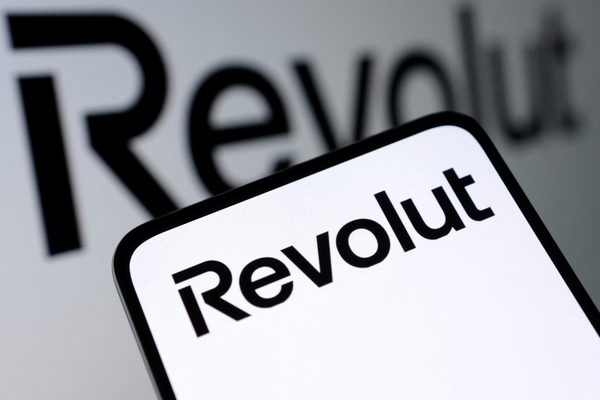Fighting the online fakers

James Godefroy at Rouse explains how businesses can protect themselves against counterfeiting on e-commerce platforms
The counterfeiting industry is growing, with Europol estimating that illegal counterfeit goods represents as much as 2.5% of world trade, or approximately $461 billion in total. Almost all global retailers are at risk of counterfeiting, with luxury goods producers a particular target.
It is difficult for businesses to know where to begin when confronted with the threat of counterfeiting. The best form of defence is preparedness, and there are a number of steps businesses can take in partnership with an IP law professional or team, to build a robust brand protection strategy.
The technology around online sales platforms is continually improving and e-commerce will only continue to soar, with sales expected to grow 10.4% in 2023. According to a recent survey from Forbes, 79% of shoppers shop online at least once a month and 20.8% of retail purchases are expected to take place online in 2023.
Unfortunately, a side-effect of this increase is that sales of counterfeit goods of the most iconic brands are also able to thrive. Businesses should therefore treat IP protection across these platforms as a main priority.
Despite recent efforts from some platforms such as Amazon and Alibaba to verify seller information on account creation, it is still relatively easy for anyone to set up an e-commerce selling account with anonymous or fake identity information, or to sell through social media channels. This allows sellers motivated to sell fake goods for lucrative profits to hide behind the anonymity this affords.
The ease at which counterfeits can be sold online means that brands need to be even more careful in looking out for these fakes, to avoid the risk of losing consumers’ trust in the validity of their goods, which could result in revenue loss and brand dilution.
Brand owners who put their products on online platforms need to be mindful of the intellectual property rights complaint mechanisms in place. There are several points to look out for - for example whether the terms and conditions of the platform include an IPR complaint mechanism, in which there is a notice and takedown system covering IP issues, and penalties in place for repeat offenders.
The best way to make sure this is taken into account is working with an IP professional, as they can identify any issues and make sure they are resolved quickly and easily.
It is important to note that IPR complaint mechanisms only deal with adverts; not the counterfeit goods themselves. In order to effectively deter counterfeits and deal with the problem at source, an effective strategy combining both online and offline enforcement methods is required.
As much as new technologies are making it easier for counterfeiters to operate, at the same time digital tools are also being developed that can help to prevent it. For example, it is now possible to give each product a unique identifier to minimise the production of counterfeit products. This could come in the form of a digital watermark, QR code, or Radio-frequency identification (RFID) tag.
These identifiers track the product through its journey, meaning it is easier to see where it has been made, sold from and uploaded to the e-commerce site from.
A 2020 study by the e-commerce platform JD.com in conjunction with the China Europe International Business School found that traceable products using blockchain technology delivered nearly 10% overall sales growth – 23% sales growth for mother and baby products, 45% increase in repurchases for healthcare and nutrition products and nearly 32% reduction in return rates for infant formula.
The e-commerce industry is pushing for more transparency, which means brands will soon be forced to demonstrate they are protecting their customers and in turn, their brand reputation. Harnessing the power of AI and digitisation are becoming hallmarks of a successful brand who can demonstrate control over their e-commerce sphere.
The right external partner can provide powerful monitoring technology to scope out global platforms. Such technology is an excellent complement to, but cannot replace, a human touch and a robust strategy. A good brand protection partner will also have an established on-the-ground presence with local expertise and partnerships with marketplaces and be very familiar with global IP laws.
Once brand owners realise that infringers are copying their products, it is tempting to take knee-jerk action to try to take them out immediately – however, this is often a mistake. Instead, consider taking a step back and identifying key stakeholders who are crucial in the supply chain. A longer scale investigation can result in impactful action to successfully deal with problems at source and create real deterrence in the marketplace.
This usually costs more in the short term but reduces the need to play Whac-a-Mole over extended periods. It is crucial to ensure that resources are properly allocated to addressing the source of counterfeit goods instead of enforcing against small distributors.
If approached strategically, brands can mitigate the risks before they become detrimental to their reputation and impact their revenues. Business leaders should prioritise this risk and become familiar with both changing legislation as well as new technological advancements that can ensure they are protected and able to trade.
James Godefroy is Senior Consultant at Rouse
Main image courtesy of iStockPhoto.com

Business Reporter Team
Most Viewed
Winston House, 3rd Floor, Units 306-309, 2-4 Dollis Park, London, N3 1HF
23-29 Hendon Lane, London, N3 1RT
020 8349 4363
© 2025, Lyonsdown Limited. Business Reporter® is a registered trademark of Lyonsdown Ltd. VAT registration number: 830519543





